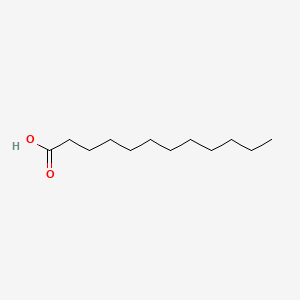| MeSH term | MeSH ID | Detail |
|---|---|---|
| Hemolysis | D006461 | 131 associated lipids |
| Neovascularization, Pathologic | D009389 | 39 associated lipids |
| Lung Neoplasms | D008175 | 171 associated lipids |
| Colonic Neoplasms | D003110 | 161 associated lipids |
| Diabetes Mellitus, Experimental | D003921 | 85 associated lipids |
| Body Weight | D001835 | 333 associated lipids |
| Acne Vulgaris | D000152 | 35 associated lipids |
| Hypersensitivity, Delayed | D006968 | 43 associated lipids |
| Liver Neoplasms, Experimental | D008114 | 46 associated lipids |
| Thrombosis | D013927 | 49 associated lipids |
| Prostatic Hyperplasia | D011470 | 20 associated lipids |
| Brain Infarction | D020520 | 17 associated lipids |
| Stroke | D020521 | 32 associated lipids |
| Starvation | D013217 | 47 associated lipids |
| Leukemia, Myeloid | D007951 | 52 associated lipids |
| Seizures | D012640 | 87 associated lipids |
| Cystic Fibrosis | D003550 | 65 associated lipids |
| Cerebrovascular Disorders | D002561 | 25 associated lipids |
| Cerebral Infarction | D002544 | 6 associated lipids |
| Liver Diseases, Alcoholic | D008108 | 13 associated lipids |
lauric acid
lauric acid is a lipid of Fatty Acyls (FA) class. Lauric acid is associated with abnormalities such as Infection, Renal tubular disorder, Hypertensive disease, Obesity and Mycoses. The involved functions are known as Transcription, Genetic, Signal Transduction, Mutation, metaplastic cell transformation and Anabolism. Lauric acid often locates in Skin, Plasma membrane, Cytoplasmic matrix, Body tissue and Palmar surface. The associated genes with lauric acid are Gene Family, SLC33A1 gene, Homologous Gene, Open Reading Frames and P4HTM gene. The related lipids are Fatty Acids, Oleic Acids, Palmitates, Stearates and 9,11-linoleic acid.
Cross Reference
Introduction
To understand associated biological information of lauric acid, we collected biological information of abnormalities, associated pathways, cellular/molecular locations, biological functions, related genes/proteins, lipids and common seen animal/experimental models with organized paragraphs from literatures.
What diseases are associated with lauric acid?
lauric acid is suspected in Renal tubular disorder, Hypertensive disease, Infection, Renal vascular disorder, Obesity, Mycoses and other diseases in descending order of the highest number of associated sentences.
Related references are mostly published in these journals:
| Disease | Cross reference | Weighted score | Related literature |
|---|
Possible diseases from mapped MeSH terms on references
We collected disease MeSH terms mapped to the references associated with lauric acid
PubChem Associated disorders and diseases
What pathways are associated with lauric acid
There are no associated biomedical information in the current reference collection.
PubChem Biomolecular Interactions and Pathways
Link to PubChem Biomolecular Interactions and PathwaysWhat cellular locations are associated with lauric acid?
Visualization in cellular structure
Associated locations are in red color. Not associated locations are in black.
Related references are published most in these journals:
| Location | Cross reference | Weighted score | Related literatures |
|---|
What functions are associated with lauric acid?
Related references are published most in these journals:
| Function | Cross reference | Weighted score | Related literatures |
|---|
What lipids are associated with lauric acid?
Related references are published most in these journals:
| Lipid concept | Cross reference | Weighted score | Related literatures |
|---|
What genes are associated with lauric acid?
Related references are published most in these journals:
| Gene | Cross reference | Weighted score | Related literatures |
|---|
What common seen animal models are associated with lauric acid?
There are no associated biomedical information in the current reference collection.
NCBI Entrez Crosslinks
All references with lauric acid
Download all related citations| Authors | Title | Published | Journal | PubMed Link |
|---|---|---|---|---|
| Kroetz DL et al. | Developmentally regulated expression of the CYP4A genes in the spontaneously hypertensive rat kidney. | 1997 | Mol. Pharmacol. | pmid:9281597 |
| Sunshine MG et al. | Mutation of the htrB gene in a virulent Salmonella typhimurium strain by intergeneric transduction: strain construction and phenotypic characterization. | 1997 | J. Bacteriol. | pmid:9287009 |
| Winkelaar GB et al. | Fat absorption after small intestinal transplantation in the rat. | 1997 | Transplantation | pmid:9293866 |
| Imaoka S et al. | Mutagenic activation of urinary bladder carcinogens by CYP4B1 and the presence of CYP4B1 in bladder mucosa. | 1997 | Biochem. Pharmacol. | pmid:9310344 |
| Maves SA et al. | Decreased substrate affinity upon alteration of the substrate-docking region in cytochrome P450(BM-3). | 1997 | FEBS Lett. | pmid:9315688 |
| Kakinuma K et al. | Effect of ionic sites of surfactants on leukocyte metabolism. | 1976 | J. Biochem. | pmid:931977 |
| Buhler DR et al. | The regiospecific hydroxylation of lauric acid by rainbow trout (Oncorhynchus mykiss) cytochrome P450s. | 1997 | Drug Metab. Dispos. | pmid:9321521 |
| Westergaard H and Dietschy JM | The mechanism whereby bile acid micelles increase the rate of fatty acid and cholesterol uptake into the intestinal mucosal cell. | 1976 | J. Clin. Invest. | pmid:932213 |
| Sigalet DL et al. | Determination of the route of medium-chain and long-chain fatty acid absorption by direct measurement in the rat. | 1997 Sep-Oct | JPEN J Parenter Enteral Nutr | pmid:9323689 |
| Poli-Scaife S et al. | The substrate binding site of human liver cytochrome P450 2C9: an NMR study. | 1997 | Biochemistry | pmid:9335524 |
